Conference Speakers
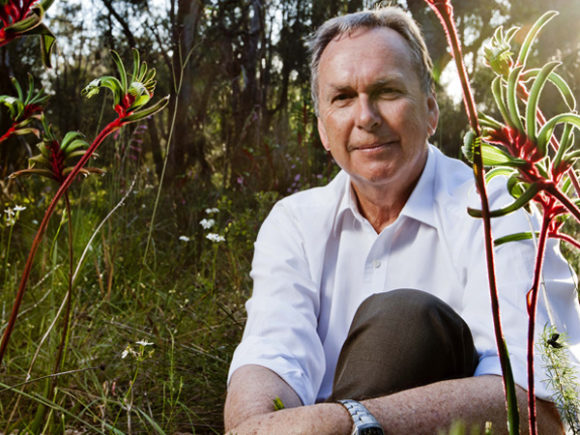
Professor Stephen D Hopper, AC – (A J Swaby Address)
Steve Hopper is a field-active conservation biologist, widely travelled, and a well-published scientific author. Currently, as UWA’s Professor of Biodiversity, he leads a program on sustainable living with biodiversity at the Albany campus. His focus is on old, climatically-buffered, infertile landscapes (Ocbils), such as granite outcrops, and on cross-cultural studies with Aboriginal people. A graduate from UWA (1974), with a PhD awarded in 1980, Professor Hopper has named some 300 plants new to science.
He was the WA government’s first Flora Conservation Research Officer in 1977. Following overseas study in 1990 in Georgia (USA) and California, Professor Hopper served as Director both at Kings Park and Botanic Garden in Perth (1992-2004) and at the Royal Botanic Gardens, Kew, in London (2006-2012).
In 2012 he was awarded Australia’s highest civilian honour (Companion of the Order of Australia) and inducted into the Western Australian Science Hall of Fame.
Abstract
New research on old landscapes from biodiversity and Aboriginal studies has revealed fresh perspectives on wildflower evolution, ecology and conservation. South coast Western Australian Noongar teachers convey a fundamental insight on caring for country summarized by their words kaat (hill, head) and beeliar (fresh water bodies). Coincidentally, this distinction is emphasized for biodiversity in Ocbil theory, pertaining to old, climatically buffered infertile landscapes, seen predominantly in the southern Hemisphere. Ocbils (old landscapes for short) in many ways are equivalent to the Noongar concept of kaat. Until recently, the practical ramifications for knowing, growing and conserving native plants from kaat or old upland landscapes have rarely been a conscious focus. This AJ Swaby Address explores where old landscapes are found globally and in Australia, what special attributes characterize their rich endemic floras, and ideas on how we might best conserve the remarkable wildflowers of these outstanding uplands.
Professor Hopper will speak on Tuesday, 1 October (evening)
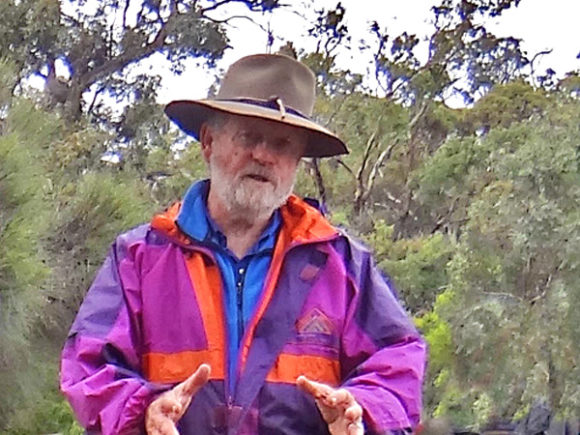
Gregory John Keighery (Keynote Conference Speaker)
Greg Keighery was a Senior Principal Research Scientist in the Science Division of the Western Australian Department of Biodiversity, Conservation and Attractions. He was a botanist in the biogeography program, largely responsible for regional scale surveys to establish conservation networks. Previously Greg was the Biosystematist at Kings Park and Botanic Garden. Over the past 30 years he has undertaken biological surveys throughout most of Western Australia, including the Goldfields, Kimberley, Nullarbor, Carnarvon Basin, Swan Coastal Plain and most major parks and reserves. Greg has published over 500 papers and articles on the biology, ecology and taxonomy of native and weedy plants of Western Australia. He is a specialist on the identification and taxonomy of Weeds, Lilies, Carrot Family and shrubby Myrtaceae of Western Australia.
Keighery’s peers have named six species in his honour, including Macarthuria keigheryi and Melaleuca keigheryi, to recognise his life-time dedication to collecting more than 30,000 plant specimens for the WA Herbarium – the largest collection by an individual in the state.
Keighery has been a member of the Wildflower Society of WA since the 1970s and was inaugural president of the Perth branch.
Abstract
What is world class about WA? A State that’s bigger than most countries, containing some of the world’s oldest rocks, fossils and life forms, one of the world’s oldest cultures and largest wilderness area. This very old land surface has led to the relatively recent burst of biodiversity in our flowering plants in southern Western Australia (Southwest), which is truly world class and recognised world-wide as such.
Not only are there over 8,000 flowering plants in the Southwest, over 80% of the species are only found here. Within these ranks are over 800 species pollinated by birds, highest in the world. Giving us such large brilliant coloured flowers as the state flower the Kangaroo Paw. The many amazing features of the Southwest wildflowers include: the greatest number of sexually deceptive orchids in the world; very large numbers of ground orchids especially the Spider Orchids; diverse systems of root types; the most species of, and the largest plants, in the world of the carnivorous plant genus Drosera; and the world’s largest parasitic plant, Nuytsia floribunda. All plants growing on wonderful poor soils.
The south coast contains excellent examples of these features: a rich diversity of all the characteristic and charismatic plants of the Southwest in the Pea, Heath, Myrtle, Banksia, Rush and Sedge families. With high diversities of species at all levels as well as many highly localised species in a number of very large wilderness parks (several of which are national biodiversity hotspots). These parks are home to many of the Southwest’s most spectacular plants – the Mountain Bells (Darwinia species), the Royal Hakea and the Qualup Bell (Pimelea). All of these contribute to the year long display of blooming biodiversity for locals and tourists alike.
Greg Keighery will speak on Tuesday, 1 October.
Session Speakers
Tuesday 1 October, 2019 – KNOW

KEN MCNAMARA
BIOGRAPHY:
Formerly Senior Curator of Palaeontology and Head of Earth & Planetary Sciences at the WA Museum for 30 years, Ken spent the last 10 years as a lecturer at the University of Cambridge in the UK, where he was also Director of the world’s oldest geological museum, the Sedgwick Museum. He is now an Adjunct Professor at UWA and Research Associate at the WA Museum. He has published 150 scientific articles on fossils, rocks and evolution and published 15 books.
TITLE:
Tales from the Fossil Record – Effects of Climate Change on the Evolution and Preservation of Western Australian Plants.
ABSTRACT:
Western Australia has some of the oldest rocks in the world and the oldest fossils, nearly 3.5 billion years old. It also has a rich, but largely poorly studied, fossil plant record. Studies that have been carried out show how fossil plants can inform us about environmental conditions in the past, particularly climatic conditions. In this talk I will show how Western Australia had lycopod forests 360 million years ago; was covered, like much of Gondwana, in Glossopteris forests 280 million years ago; seed fern, conifer and fern dominated warm, wet habitats during the time of the dinosaurs; and more recently, just 40 million years ago, a mixed flora of both rain forest elements and the more typical modern day flora, including proteaceous woodlands. I will show how these more recent floras were preserved in rocks that themselves are part of the story of Australia’s ever-changing climate.
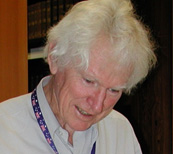
ALEX GEORGE
BIOGRAPHY:
Alex George grew up in Perth and enjoyed exploring the bush, although he didn’t find his vocation as a botanist until after leaving school. He worked for 21 years with the Western Australian Herbarium, then 12 years in Canberra as Executive Editor of the Flora of Australia, then as a freelance editor and indexer back in Perth. He has published many papers and books. On fieldwork he has collected more than 18,000 specimens, mainly in W.A., including 400 that became type specimens of new species. In 2009 he was awarded an Honorary Doctor of Science by Murdoch University, became a Member of the Order of Australia in 2012, and in 2015 received the Wildflower Society Award of the Wildflower Society of Western Australia.
TITLE:
Still they come: botanical exploration in Western Australia since 1697.
ABSTRACT:
The first plant specimens were collected in the west in 1697 and more were collected in 1699. From 1791 collecting became more common and it increased markedly after settlement of the colony in 1829. More than 800,000 specimens have now been gathered in W.A., representing almost 13,000 species, but new species continue to turn up in all parts of the State. This talk highlights the major players in the story.

MALCOLM TRAILL
BIOGRAPHY:
Malcolm Traill is currently Public Programs Officer at Museum of the Great Southern, Albany, and a freelance historian and heritage professional. He was formerly Battye Librarian at the State Library of Western Australia and Local Studies Librarian, Albany Public Library. He is also Chair of Creative Albany and Tutor in History at UWA Albany campus.
TITLE:
A View from the Top: Plants and landscape in Early Albany as painted by Robert Dale (1834).
ABSTRACT: In 1833, Lieut. Robert Dale, an officer with the 63rd Regiment based in Albany, took his easel to the top of Mount Clarence and sketched a panoramic view of the surrounding countryside from his elevated position. From this detailed panoramic view of the south coast and the earliest of its type, we can glean many facts and form many opinions about such topics as aboriginal burning regimes, the extent and health of local flora, the hunting customs and living arrangements of the Menang, and even the relationships between them and European settlers, including the way that this painting was used as propaganda to publicise the embryonic settlement of Albany, and the types of flora that were, are and perhaps never have been in the south coastal region around King George Sound.
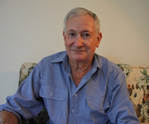
MALCOLM FRENCH
BIOGRAPHY:
Commercial conservationist, bush traveller, agriculturalist, eucologist, volunteer at Perth’s Herbarium for 23 years. Awarded OAM for conservation in agriculture in 2015. Author of Eucalypts of WA’s Wheatbelt
ABSTRACT:
A presentation of eucalypts rarely seen, mostly unknown in cultivation, very unique and special to the south of WA.
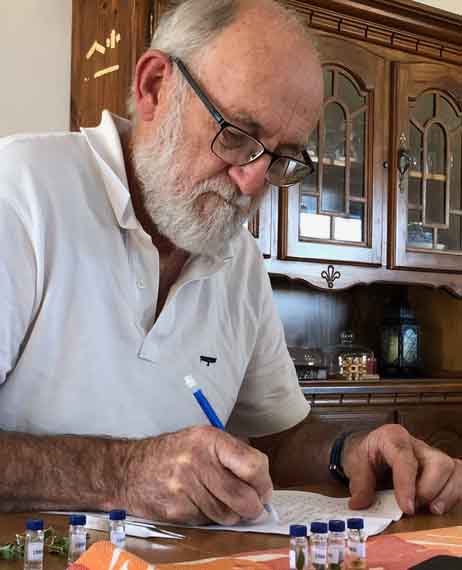
BEVAN BUIRCHELL
BIOGRAPHY:
Biochemist and expert in the genus Eremophila, co-author of ‘A Guide to the Eremophilas of WA’ and Research Associate in the WA Herbarium, he has described 17 new species of Eremophila over 20 years of experience in field observations..
TITLE:
Eremophilas of the desert.
ABSTRACT:
Western Australia is the centre of diversity for the genus Eremophila, with about 80% of species unique to the west. The genus Eremophila is confined to Australia and consists of approximately 250 species, with seven different flower shapes which allow for both bird and insect pollination. Since 2007 there have been over 20 new species named, with more to come, and most have restricted ranges and are highly vulnerable. Recent analysis shows the need for taxonomic changes for this genus which plays a vital role in Aboriginal medicine as well as insect diversity.

ALISON LULLFITZ
BIOGRAPHY:
Alison Lullfitz grew up on the south coast of Western Australia and since returning home in 2009 has lived with her family on the Pallinup River at Boxwood Hill. She has just submitted her PhD which outlines multi-faceted and collaborative research with Nyungar/Noongar Elders exploring how specific cultural activities have influenced floristic diversity and patterns in southwestern Australia. She undertook her PhD at UWA in Albany where she also teaches in conservation biology and ethnobiology.
TITLE:
Examining correlation between Nyungar residential patterns and contemporary Macrozamia dyeri distribution.
ABSTRACT:
Through comparison of ecological, archaeological and ethnographic information, there is strong evidence of Nyungar first people’s influence on contemporary distribution of Macrozamia dyeri (Zamiaceae) in the South East Coastal Province of the Southwest Australian Floristic Region. Findings demonstrate that along with edaphic, climate and other environmental factors, consideration of place-based, pre-colonial human dispersal and land management practices is important for plant conservation in Australia, particularly for taxa with prolonged use by humans. Analyses of long-lived Macrozamia elsewhere in Australia may be useful in identifying important past Aboriginal land practices. (Co-authors Dabb, Reynolds, Knapp, Pettersen and Hopper.)
LIBBY SANDIFORD
TITLE:
Just a bit of bush.
ABSTRACT:
This talk presents some of the findings of surveys on 3 of 5 Bush Heritage Australia properties in the Fitz-Stirling Gondwana Link, undertaken between 2013 and 2016. Although occurring on similar landforms and in very close proximity to each other these properties have surprising differences in terms of both flora and vegetation.
GREG BOURKE
TITLE:
Western Australia’s Carnivorous plant diversity, distribution and conservation.
GREG & BRONWEN KEIGHERY
TITLE:
eGuide to Wildflowers
ABSTRACT:
Western Australian botanists and naturalists Bronwen and Greg Keighery and Michael and Irene Morcombe have been working on with app writer Michael Woodhouse from Glide Pty Ltd to develop an eGuide to identify Western Australian Wildflowers. Wildflower eGuides from around the world were perused before beginning the project. Most of these were based on existing book guides but WA Wildflower guide was developed from scratch. Each plant is described against more than 30 characters, 10 of which are used in the identify section. These characters and the plant descriptions use plain English, specific botanical terms explained and illustrated when required. The first edition contains more than 1000 different wildflowers (species, subspecies and varieties) from across WA. More than 4000 images support the information with up to 10 images for each wildflower. The images illustrate flowers, leaves and whole plant. Others images include the fruit, seedlings, bark , diagnostic features and bushland setting. The eGuide will be expanded to cover thousands of plants over the coming years
Thursday 3 October – GROW

BOB DIXON
BIOGRAPHY:
Bob Dixon, now retired, was employed at Perth Zoo as the Nurseryman for 7 years then at Kings Park and Botanic Garden for 35 years. Initially employed as the Horticultural Advisory Officer in Kings Park, advising the general public how to grow Western Australian native plants, later his duties included that of Acting Bushland Manager and finally as Manager, Biodiversity and Extensions in the Science Directorate. Bob specialised in managing natural ecosystems, environmental weed control, growing and translocating declared rare flora back into natural and degraded ecosystems.
TITLE:
A lifetime of growing and still on a huge learning curve.
ABSTRACT:
Growing native plants is not rocket science, however, if you wish to grow species not readily available in nurseries, this includes some common as well as rare species, you have to find out how to propagate them. This can be challenging and require an entirely different approach to conventional methods. Many of my discoveries are unexplained, e.g. Macropidia fuliginosa, first propagated over 40 years ago at Perth Zoo, I can propagate them from seed but still do not know why they respond specifically to the treatment. I was fortunate working with so many scientists in Kings Park at the forefront of new propagation technologies and was able to blend some of their discoveries with my own unconventional techniques. I will discuss soil seedbank harvesting of naturally aged seed, sometimes necessary with rare species where little or no seed is available from the plants themselves and recalcitrant species such as sedges and rushes. Specialised scarification of some rare Grevillea species and native foxgloves. The use of sucker cuttings which can substantially improve strike rates of cuttings from a wide range of resprouting difficult to strike species such as Conospermum and Verticordia. Seed sowing in-situ of some rare species and bare root planting young seedlings directly into the ground when you have excess seedlings that you don’t want to throw away.
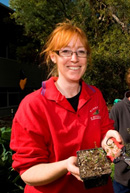
AMANDA SHADE
BIOGRAPHY:
Amanda Shade has a BSc from the University of Western Australia with majors in Botany and Anthropology, and a Diploma of Horticulture via the TAFE system. She has worked as a horticulturist both in Perth and overseas in Edinburgh for approximately 26 years, with 21 of those years spent at Kings Park. Amanda has been performing her current role as Nursery Curator and Trainee Coordinator for the past 15 years. She is passionate about all flora, but particularly WA flora, and especially enjoy being able to help train and inspire future generations of plant enthusiasts.
TITLE:
55 years of growing Western Australian plants for the state Botanic Garden.
ABSTRACT:
A snapshot of 55 years of propagating, cultivating and trialling Western Australian flora for display, education, research and conservation at Kings Park and Botanic Garden.
GEOFF WOODALL
TITLE:
Native plants in the food industry
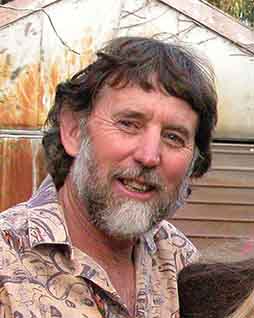
KEVIN COLLINS
TITLE:
Mastering Banksia Growing
LIESBETH UIJTEWAAL
TITLE:
Aussies in a cowshed
ABSTRACT:
Growing Australian plants in Europe is vastly different to that of growing them in Australia. Sourcing them in the first place presents a challenge. Limited popular species are available, but for a native plant enthusiast who is totally obsessed, the only way to collect is to propagate so this is what she does.
To accommodate her collection, two cow sheds have been converted to glasshouses to hold plants in winter. In summer her garden is filled with trees and shrubs, in pots ranging from 8 to 80 cm, and some grow up to 3 meters high. One of these glasshouses has been converted into a ‘bush’ block with Western Australian plants in one area and the other area holding eastern Australian plants.
Plants in pots need regular potting on, sometimes once or twice a year, the larger ones maybe every two or three years. Of course, potting mix and fertilizer need to be adapted for Australian natives. Fortunately, Liesbeth found a potting mix company that produces a special mix, for her plants only. Osmocote for Australian natives can be obtained directly from the – Dutch! – manufacturer.
Watering is done by hand, and can take three hours per day during the middle of summer. Since careful watering is essential for plant health the pots are often lifted to determine whether or not they need to be watered.
When Liesbeth opens her gardens to the public in summer, visitors can easily be transported to the southern hemisphere with the interesting foliage, beautiful smells and vast array of colourful flowers.
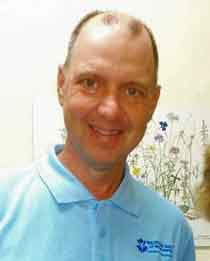
GERALD LORENZ
TITLE:
Growing native flora in a European environment
STUDY GROUP PRESENTATIONS
Banskia / The Other Banksia – Dryandra / Grevillea / Eremophila / Garden Design / Isopogon & Petrophile /Acacia / Hakea
Study Group panel and Q & A
Friday 4 Oct – Conserve & Preserve
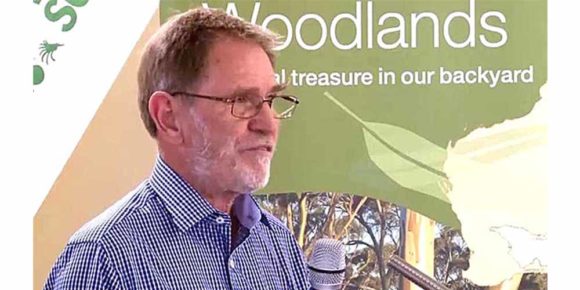
BRIAN MOYLE
TITLE:
Helena & Aurora National Park – Are We There Yet?
BRONWEN KEIGHERY
TITLE:
Passion and knowledge in conserving our wildflowers
ABSTRACT:
The Wildflower Society of WA (Inc.) has contributed to the setting standards for the flora and vegetation survey and conservation assessments through its bushland survey program and published survey guide. Current, comprehensive and well-documented information on the flora and vegetation of a natural area with a treatment of the area’s local and regional conservation values is essential in determining the suitable use of a natural area. It is on the basis of such rigorous information that areas should be protected as part of our national estate in public lands for the benefit of present and future generations. However having worked as a consultant botanist, a government environmental officer and community advocate on conservation planning in the Southwest it is apparent that much of the time this is not enough. Industry is able to convince government that areas of the highest conservation value should be developed on what are purported to be economic grounds but are in reality the passionate pursuit of wealth for wants not needs. The passion for preserving our heritage of wildflowers is not given this same standing.
ELLEN HICKMAN
TITLE:
Tiurndins (Tribonanthes) – conserving through botanical illustration
ABSTRACT:
The tiurndins (Tribonanthes Endl.) comprise a small taxonomically challenging genus of geophytes endemic to the Southwest Australian Floristic Region. Six named and one undescribed species of Tribonanthes were previously recognized in recent literature. It is a genus where herbarium studies alone are insufficient to delineate taxa. A knowledge of variation in wild living material has proved essential to resolve taxonomic difficulties in the tiurndins. Illustrations of living plants recognised 12 species, four of which are new (T. elongata E.Hickman & Hopper, T. keigheryi E.Hickman & Hopper, T. monantha E.Hickman & Hopper and T. porphryea E.Hickman & Hopper) and reinstated two historical species (Tribonanthes variabilis Lindl. and T. uniflora Lindl.). Botanical illustration, especially of internal floral morphology, has revealed several previously unrecorded characters that help diagnose the species of Tribonanthes.
DR SARAH BARRETT
TITLE:
Conservation of Threatened Flora of the South Coast of WA
ABSTRACT:
The Southwest Australian Floristic Region (SWAFR) is internationally recognised for exceptionally high species richness and geographically restricted species. Within the SWAFR, the Southeast Coastal Province (Hopper & Gioia 2004) has hotspots of species richness and endemism, particularly in Kwongkan communities such as those of the Stirling Range and Fitzgerald River National Parks and the Ravensthorpe Range.
There are more than 100 Threatened Flora on the south coast, many of these are short range endemics that were always rare while others were once more widespread but have declined due to a range of threatening processes. Foremost amongst these threats is the introduced root pathogen Phytophthora cinnamomi due to susceptible plant communities, conducive soils, topography and climatic conditions. However, other threats include fire, herbivory, weeds and drying climate. With over 35 Critically Endangered flora at a high risk of extinction, this paper will discuss the significant challenges for threatened flora conservation in terms of mitigation of threatening processes and in-situ and ex-situ conservation.
